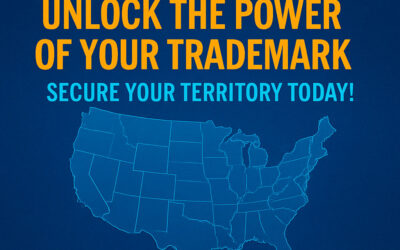“You only have to do a very few things right in your life so long as you don’t do too many things wrong.” – Warren Buffett.
A lot of people don’t think about selling their business when they are starting out, and as the years progress, you spend even more time in the day-to-day activities that serve your customers and improve your team. While all this is essential to your business success it is important to not lose sight on the end-game goals that could lead to unpleasant surprises after decades of effort. Your long-term end goal may be to transition the business to family or to sell to key employees, competitors, or on the open market. Either way the key to building a salable business that meets that goal relies greatly on managing your business, not being your business.
What follows is a short list of things that are very helpful to do right so that your business venture will have a happy ending if you decide to sell.
GOOD LOOKING FINANCIALS – YOUR BALANCE SHEET TELLS THE REAL STORY
“He’s not looking at quarterly earnings projections, he’s not looking at next year’s earnings, he’s not thinking about what day of the week it is, he doesn’t care what investment research from any place says, he’s not interested in price momentum, volume or anything. He’s simply asking: What is the business worth?” – Warren Buffett
Part of building a strong and salable business includes financial health. Business owners often rely on their profit and loss statement to judge how well their business is doing. And for good reason! The P&L shows your business income, cost of goods sold or cost of services provided, general and administrative expenses plus other income and expenses. All are good tools in measuring the performance of the overall business and in identifying individual profit centers. These tools also aid in making business decisions and in responding to market trends. But the real story of the value of your business lies in the Balance Sheet.
Your balance sheet chronicles your business story. The reader of your business’ balance sheet gains a great deal of insight into the strengths or weaknesses of your business.
- Working Capital – Do you have adequate short term working capital for a new owner to run the business for at least a month without immediately funding it out of pocket? This means your business needs enough short term assets (Accounts Receivable, short term loan receivables, etc.) to exceed your short term liabilities (Accounts Payable, short term loan payables, payroll taxes payable, accrued expenses, sales tax payable, etc.) and still have one month’s operating expenses left over.
- How strong is your cash position? – While the sale of your business may not include the cash in the bank it is certainly an indicator of your business health. Cash “poor” businesses indicate trouble so having a health amount of cash on hand is important.
- Business assets – What does your business own and what is the value of those assets. Your fixed assets (furniture, fixtures, equipment, vehicles, computers, etc.) inventory, security deposits, and intangible assets (patents, trademarks, websites, etc.) may be included in the sale and also establish that you have reinvested profits into the business.
- Liabilities – This section of your balance sheet informs the reader the amount of Accounts Payable, short-term and long-term loans, accrued payroll and other expense liabilities, sales tax and payroll tax liabilities and any other monies owed to others. While it is important to have obtained proper funding a large amount of liabilities may indicate a business in trouble.
- Equity – The Equity section of the balance sheet tells the story of the history of income or loss and the retention of that profit. Of course the higher the equity the better!
ESTABLISHED BRANDING – MORE THAN JUST OBTAINING TRADEMARK REGISTRATIONS
“Keep all your eggs in one basket, but watch that basket closely.” – Warren Buffett
Branding allows customers to gain information about your goods and services without having to first sample them. By conveying source information in the marketplace consumers can readily determine critical aspects of your goods and services prior to making a purchase. For example, if someone is taking a road trip and decides that they would like to snack on French fries during the drive then they already know the quality of fries they will receive if they stop at McDonald’s. Alternatively, when purchasing new shoes a customer can ascribe certain attributes to the shoes if they are sold by Prada or Jimmy Choo. Similarly, your branding should be designed to capture goodwill and reputation within your marketplace. Essential to securing that goodwill and reputation is selecting brands for which you can obtain a federal trademark registration. However, this is only the first step.
To maximize the benefit, protection, and commercial value of a registered trademark, it is important to regularly check whether anybody else is using confusingly similar trademarks without permission. When determining the current strength of a registered trademark (“mark”) one important factor to consider is the presence of unauthorized, similar trademarks by others. Unauthorized use of a similar trademark can reduce or eliminate the rights of a trademark. Accordingly, to maintain the value in any mark, it is important to take action to eliminate any unauthorized similar trademarks that are detected.
By properly designing a trademark portfolio for the brands that you adopt and then enforcing your exclusive trademark rights in the marketplace you dramatically increase the value of your business when it is time to sell.
MASTER YOUR MARKET CHANNELS – PROVING THAT YOUR BUYER CAN CONTINUE YOUR SUCCESS
“It’s far better to buy a wonderful company at a fair price than a fair company at a wonderful price.” – Warren Buffett
Various marketing strategies are available to all businesses: in person sales, telephone solicitations, Internet advertising, email campaigns, mailings, participation in seminars and tradeshows. Properly identify the marketing strategies that are best suited for your business and being able to explain them to prospective purchasers is critical in providing purchasers with some assurance that they will be able to continue your success.
Depending on the size of your business, competitor activity, industry customs, and your pricing structure different marketing channels may be more effective. For example, if you operate a thirty person residential construction company then advertising in a local county paper (such as “The Route 108 Monthly Advertiser” which distributes in Howard County Maryland) may be critical to your success. Alternatively, if your law firm handles divorces then keyword advertising on the Internet (such as Google, Yahoo, Bing, the Avvo attorney directory, www.westlaw.com, www.physicianmomsgroup.com, or www.lawyers.com) may be the most advantageous way to drive sales. For other businesses, such as auctioneering, having an active Facebook page and being part of local community groups on Facebook may be the best way to bring people to your auctions.
Properly identifying worthwhile marketing channels and establishing systems for using them can greatly reduce the amount of time it takes to sell your business. Creating confidence in your buyer’s ability to continue growing your business will dramatically increase the value of your business when it is time to sell.
If you have any questions regarding accounting and/or bookkeeping please contact TBooks. Teresa Sanders has been helping individuals and business with their bookkeeping and accounting needs for over twenty years.
If you have any questions regarding branding, trademarks, patent planning or other intellectual property matters, please contact Garcia-Zamor Intellectual Property Law, LLC. Ruy Garcia-Zamor has been helping individuals and businesses with their intellectual property needs for over nineteen years.







